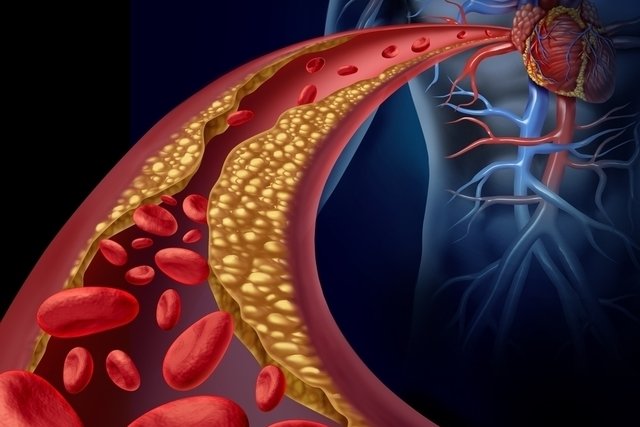Dyslipidemia is a situation characterized by changes in cholesterol and triglyceride levels, which can happen due to genetics or be a consequence of a diet rich in fat, lack of physical activity, type 2 diabetes and chronic diseases that affect the liver.
Thus, in this situation it is common to observe an increase in LDL cholesterol and triglyceride levels and a decrease in HDL cholesterol levels in the blood test, increasing the risk of deposition of fatty plaques inside the blood vessels, which increases the risk of heart problems.

How to identify dyslipidemia
Dyslipidemia does not lead to the appearance of signs or symptoms and, therefore, for it to be identified, blood tests must be carried out to assess the levels of total cholesterol, LDL and HDL cholesterol, and triglycerides. These tests may be requested routinely or when the doctor wishes to investigate dyslipidemia due to a family history of dyslipidemia or atherosclerosis or the onset of atherosclerotic disease before the age of 60.
Thus, in the presence of higher levels of LDL and triglycerides or a decrease in HDL, the doctor can confirm dyslipidemia, although it is necessary to carry out other tests that help identify the cause and check the risk of cardiovascular disease.
To find out if your cholesterol levels are normal, enter your cholesterol test data into the calculator below:
In some cases, the doctor may request that the levels of apolipoprotein B (Apo B) and C-reactive protein (CRP) be measured, as this is an indicator of inflammation and also helps to identify the risk of cardiovascular diseases. Find out more about testing for C-reactive protein.
Main causes
Dyslipidemia occurs due to changes in the body that lead to excessive production of triglycerides and LDL cholesterol or decreased production of HDL. Thus, this type of change can be classified into two main types according to the cause:
- Primary dyslipidemia, which happens due to genetic factors, and in these cases it is possible to observe other people in the family with dyslipidemia;
- Secondary dyslipidemiawhich appears as a consequence of the person’s lifestyle or other illnesses.
Secondary dyslipidemia is the most common type of dyslipidemia and can occur as a result of the following situations:
- Sedentary lifestyle and high-fat diet;
- type 2 diabetes;
- Obesity;
- Excessive alcohol consumption;
- Chronic renal failure;
- Chronic liver disease;
- Hypothyroidism;
- Smoking;
- Eating disorders, such as anorexia or bulimia;
- Cushing’s syndrome;
- Use of some medications, such as diuretics, beta blockers, contraceptives, corticosteroids and anabolic steroids, for example.
Therefore, it is important that the cause of dyslipidemia is identified so that the doctor can recommend the most appropriate treatment to regulate cholesterol levels and prevent the development of complications.
How the treatment is carried out
Treatment for dyslipidemia aims to control cholesterol levels and prevent the development of cardiovascular diseases. Furthermore, treatment may vary according to the cause of dyslipidemia, and it may be necessary to use specific medications for each situation and to reduce levels. of LDL cholesterol. Check out which remedies are recommended to lower cholesterol.
It is also important that people avoid smoking and drinking alcohol in excess, in addition to being recommended to practice physical activity regularly and have a diet low in saturated fats and sugar and rich in fruits, vegetables and foods rich in fiber.
Bibliography
- BRAZILIAN SOCIETY OF CARDIOLOGY. Update of the Brazilian guideline on dyslipidemia and prevention of atherosclerosis. 2017. Available at: <http://publicacoes.cardiol.br/2014/diretrizes/2017/02_DIRETRIZ_DE_DISLIPIDEMIAS.pdf>. Accessed on May 17, 2021
- MINISTRY OF HEALTH. Dyslipidemia: prevention of cardiovascular events and pancreatitis. 2013. Available at: <https://portalarquivos.saude.gov.br/images/pdf/2014/abril/02/pcdt-dislipidemia-livro-2013.pdf>. Accessed on May 17, 2021
-
Referring to: “Cholesterol Index Calculator”:
- BRAZILIAN SOCIETY OF CARDIOLOGY. Update of the Brazilian Guideline on Dyslipidemia and Prevention of Atherosclerosis. 2017. Available at: <https://www.scielo.br/pdf/abc/v109n2s1/0066-782X-abc-109-02-s1-0001.pdf>. Accessed on September 15, 2020

Sign up for our newsletter and stay up to date with exclusive news
that can transform your routine!
Warning: Undefined array key "title" in /home/storelat/public_html/wp-content/plugins/link-whisper-premium/templates/frontend/related-posts.php on line 12
Warning: Undefined array key "title_tag" in /home/storelat/public_html/wp-content/plugins/link-whisper-premium/templates/frontend/related-posts.php on line 13



